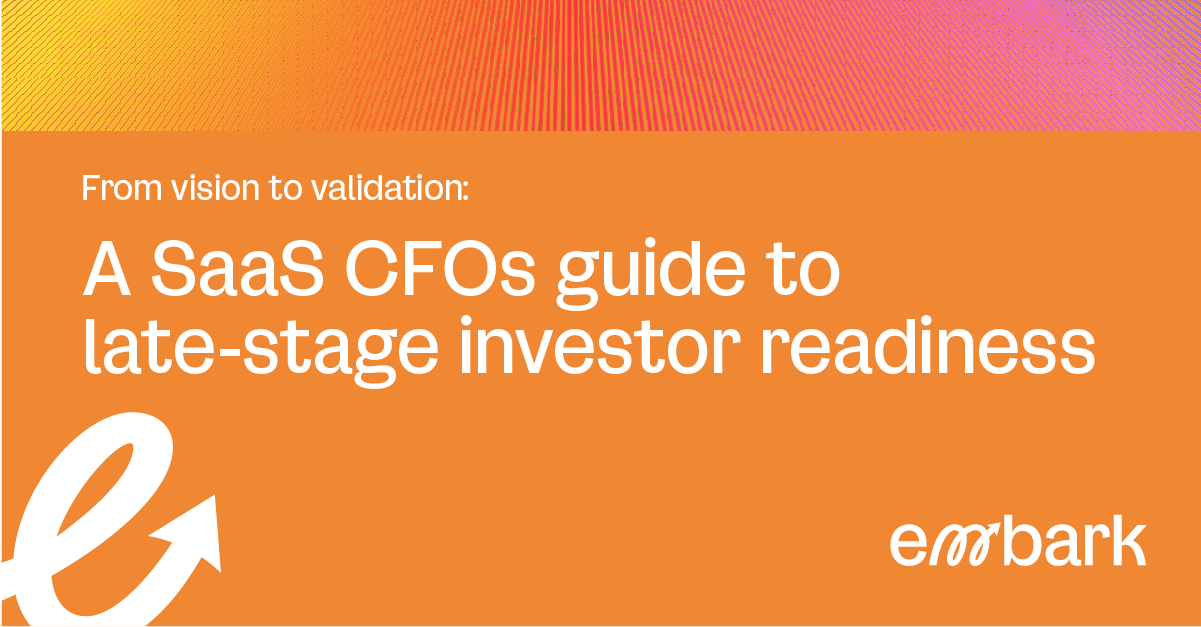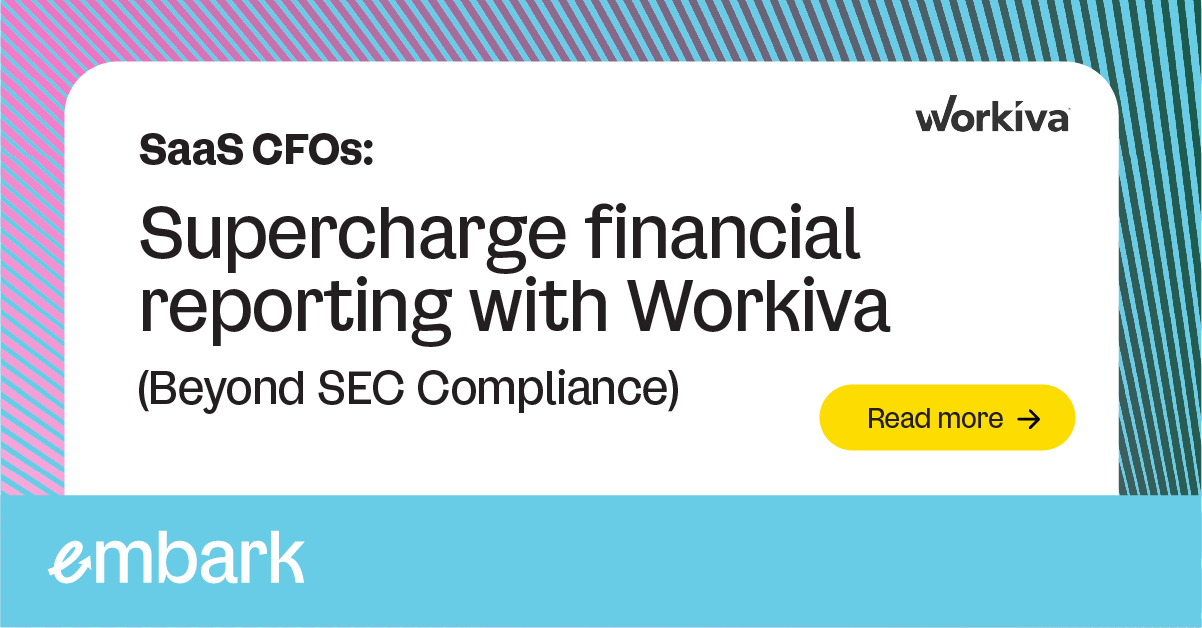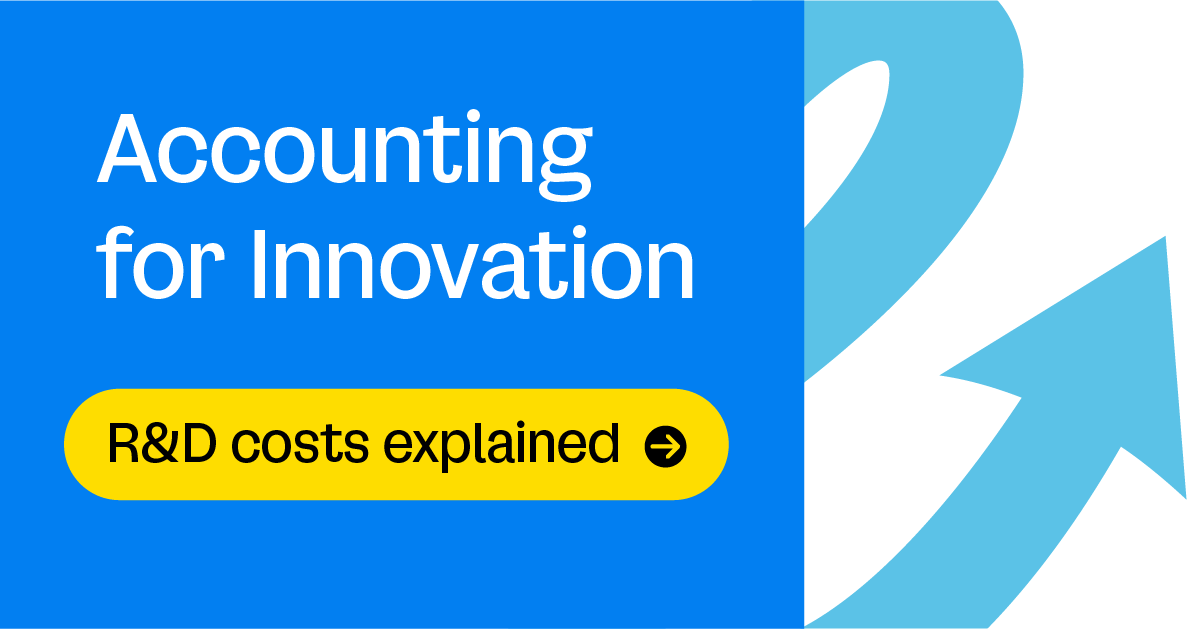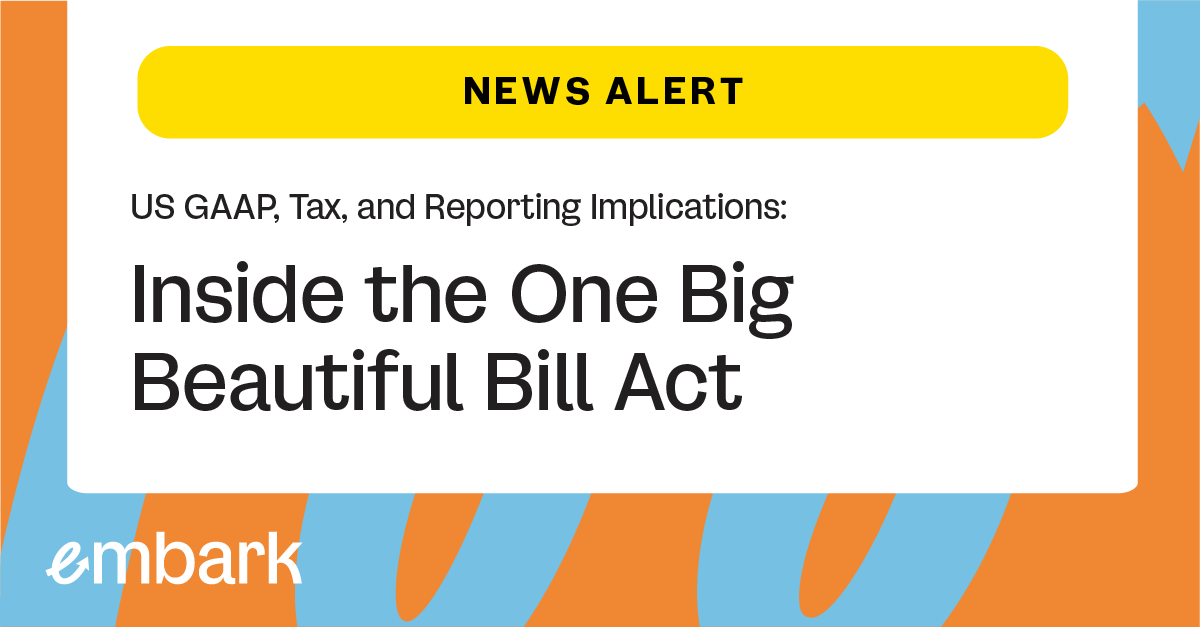Updated August 2023
.png?width=728&height=409&name=embark_goodwill%20impairment_blog%20graphics_v1-05%20(1).png) Goodwill impairment is one of those accounting terms that's more bark than bite. Sure, some of the confusion around the guidance is valid. After all, goodwill itself isn't the type of asset that you can really sink your teeth into like a good ol' fashioned widget-making machine or stacks of cash.
Goodwill impairment is one of those accounting terms that's more bark than bite. Sure, some of the confusion around the guidance is valid. After all, goodwill itself isn't the type of asset that you can really sink your teeth into like a good ol' fashioned widget-making machine or stacks of cash.
But just because the fine folks at the Financial Accounting Standards Board (FASB) classify goodwill as an intangible asset doesn't mean it's any less important to your balance sheet as other line items in the same financial reporting neighborhood. Ultimately, goodwill impairment is necessary to provide clarity for stakeholders and an accurate assessment of value. So on that note, let’s dive in and see what goodwill means for your accounting and reporting.
Baby Steps: What Is Goodwill?
To state the obvious, any discussion around the impairment of goodwill should begin with a thorough understanding of the underlying concept – goodwill. Per ASC 350, the FASB defines goodwill as:
An asset representing the future economic benefits arising from other assets acquired in a business combination or an acquisition by a not-for-profit entity that are not individually identified and separately recognized.
Quite the mouthful, huh? And somewhat nebulous to boot. Translating that definition into ordinary language, goodwill is an intangible asset that represents the price premium one company pays when acquiring another. Put another way, it's the amount paid above the cumulative net value of the acquired business’s assets.
As a quick aside, the IFRS definition of goodwill is similar to that of US GAAP, just with the latter permitting more intangible assets and, thus, reducing the amount of goodwill a company recognizes. The more you know, right?
Anyway, why would a company ever pay such a premium in the first place, you ask? Well, for starters:
- Brand reputation, recognition, and loyalty
- A qualified, assembled workforce
- Excellent customer service
- A robust, satisfying corporate culture
All of these items have value, but not in the same way that tangible assets like PP&E, cash & cash equivalents, and the other "traditional" assets do. That's where intangible assets like goodwill come into play. In the case of goodwill, it provides a place for companies to report the value of items like brand reputation, employee relations, and other synergies.
For example, if company A acquires company B for $500 million, but the net value of company B's assets, including identified intangible assets, is only $400 million, then that $100 million paid over the net value is considered goodwill. Further, goodwill is tied to those synergies and the presumption that the acquired business will continue to operate, generate cash flows, and provide value to the investors, owners, and other stakeholders.
Goodwill Valuations for a Business Transaction
That example leads us to a critical point – goodwill isn’t a one-trick pony. Yes, as we’ll discuss for the remainder of this piece, it can play a major role in standard GAAP accounting. But it can also be front-and-center in a business transaction, an area that is too often overlooked or underestimated given the million other moving parts in M&A.
But those synergies we mentioned have value. As does brand reputation, customer relationships, and a multitude of other intangible factors contributing to future economic benefits. And since such assets and potential benefits can have a significant impact on a business transaction, you need to know their value. And that’s the critical role goodwill valuations play in business transactions.
We won’t take a deep dive into goodwill valuations right now since impairment is the topic du jour. However, we still want to briefly mention the two primary methods of valuing goodwill in a business transaction – the market approach and income approach.
The Market Approach
The market approach uses evaluations of comparable transactions and comparable companies in the market to derive the value of the assets being acquired. By analyzing the pricing of similar acquisitions relative to revenue or financial multiples, this methodology provides valuable insights into the fair value of goodwill based on observed market data.
The Income Approach
The income approach estimates future cash flows the acquired asset will generate, typically using discounted cash flow (DCF) models for the estimate. The valuation specialist then discounts the cash flows to their present value, considering growth rates, required rates of return, and other pertinent variables in the analysis.
Note how we mentioned the use of valuation specialists. Obviously, when it comes to M&A, the stakes couldn’t be higher. And, since goodwill valuation isn’t solely based on historical data but inherently complicated, murky future market conditions and performance as well, it’s not exactly a back-of-the-envelope type of calculation. Hence, the need for experience and expertise in this critical area. But we’ll get off of our soapbox for now.
The Basics of Goodwill Impairment
That brings us to goodwill impairment. Long gone are the days when US GAAP allowed public companies to amortize goodwill like they do long-lived assets. But if you don't amortize goodwill assets like intellectual property, for instance, or depreciate it like plant equipment, then how do you make sure your recorded goodwill is recoverable? You guessed it – goodwill impairment.
Goodwill impairment exists when the fair value of your reporting unit drops below its carrying value. The topic du jour, goodwill impairment testing, is the mechanism that determines the amount of that accounting charge.
It's important to note that GAAP requires a company to assign all of its goodwill to its reporting units and test each reporting unit’s goodwill for impairment at least on an annual basis. Interim tests for goodwill impairment are required when events or circumstances change – triggering events – that, more likely than not, would reduce the fair value of a reporting unit below its carrying value. Example of such triggering events could include these, among others:
- Potential impairment of other assets
- Cash flow issues or operating losses at the reporting unit level
- Negative current events or outlooks for industry impacting company holistically or specific reporting units
- Planned or announced closures, layoffs, restructuring, or dispositions
- Rising interest rates, valuation reductions, increased costs
Put another way, deteriorating economic conditions have a way of triggering mandatory goodwill impairment testing more often than the annual requirement.
Further, under available private company accounting alternatives, private companies have the choice to test for impairment and amortize goodwill over a useful life no longer than ten years. The FASB provides this accommodation to make life a bit easier and less costly for private companies since they don’t necessarily have the resources that public companies do.
Note, however, our use of the word “choice” in the previous paragraph. While the private company accounting alternative is certainly tempting, it's not always going to be the most appropriate avenue for a business. For instance, an organization would have to unwind any private company alternatives under GAAP for all of their financials if they ever took the company public.
The Latest Guidance on Goodwill Impairment: ASU 2017-04
From a buyer's perspective, it's critical for you to fully understand the way goodwill works, how you test for impairment, and what it means for your financial statements and stakeholders. And on that front, we have some pretty darn good news – with ASU 2017-04, the FASB simplified the test for goodwill impairment.
If you’ll recall, according to the old standard – ASU 2011-08, to be exact – companies had the option to begin looking at goodwill impairment from a pretty simple and straightforward qualitative assessment – commonly referred to as step zero – that encompassed different high-level economic factors. If a company failed that test, it proceeded to the quantitative level of testing, which entailed an additional two-step process. Of course, companies could also opt just to skip the qualitative step altogether, as many did.
The latest – and significantly simplified guidance – basically eliminates a step from the assessment process. While companies can begin with the qualitative assessment if they so choose, they can also opt to head straight for the quantitative assessment. And that assessment is very straightforward – when the carrying value of the reporting unit exceeds its fair value, you simply measure the impairment charge as the difference between those two amounts.
For example, let’s say a company’s carrying value is $100,000 and the fair value is $90,000. It can directly compare the fair value of a reporting unit with its carrying value to arrive at the impairment charge:
Therefore, failing this one and only step in the assessment process will always result in recognition of an impairment charge. Also, note that an impairment charge is capped at the carrying value of goodwill. In other words, even when there's a significant difference between the carrying value of the reporting unit and the fair value versus the total goodwill recorded, you can only write your goodwill down to zero.
Private Company Goodwill Alternatives
As we already mentioned, some private companies might prefer to adhere to the public company standards on goodwill impairment. We imagine the simplified guidance only extends that dynamic, where a private company no longer faces such a trade-off between simplicity and being prepared for an exit strategy that might include going public or being acquired by a public entity.
Trust us when we say that unwinding those private company goodwill elections in financial statements, just to comply with the public company standard, isn't exactly a walk in the park. It takes quite a bit of time, effort, and resources.
Still, for the sake of being thorough and unbiased, we want to present at least the most common private company goodwill alternatives. The following are already in the accounting standards codification by way of ASU 2014-02:
- Once again, the simplest alternative gives private companies the option to amortize goodwill up to a maximum of 10 years and avoid any annual goodwill impairment tests altogether.
- Nonpublic companies can also elect other alternatives to simplify, including performing their goodwill impairment at an entity-wide level rather than at each reporting unit. This election also permits nonpublic companies to assess for goodwill impairment only when there is a triggering event, as discussed above, rather than conducting a required annual test. Measurement of impairment follows the updated impairment guidance by measuring the excess of the carrying value of the entity – or reporting unit – to its carrying value.
Looking Down the Goodwill Road
Interestingly, up until recently, accounting for goodwill was an active project on the FASB’s technical agenda. However, in a curveball that few saw coming, the project was essentially given the heave-ho during the Board’s June 15, 2022 meeting. Therefore, while ASU 2017-04 was once essentially considered the first phase of a two-phase project, it now looks as if it’s actually the endpoint, at least for the time being.
A Final Word from Embark
Keep in mind, even the simplified accounting standards update mandates testing goodwill for each of your reporting units, assuming you're not electing one of the private company goodwill alternatives. In the meantime, you still have a business to run and everyday accounting responsibilities to meet, so unless you have a thoroughly goodwill-tested CPA or two on the team, an experienced partner might be exactly what you need.
Therefore, if you'd just prefer to have a squad of goodwill experts come in and help with the heavy lifting – whether for impairment testing for your financial reporting, valuations for M&A, or both – Embark is always ready to step in and get to work.







